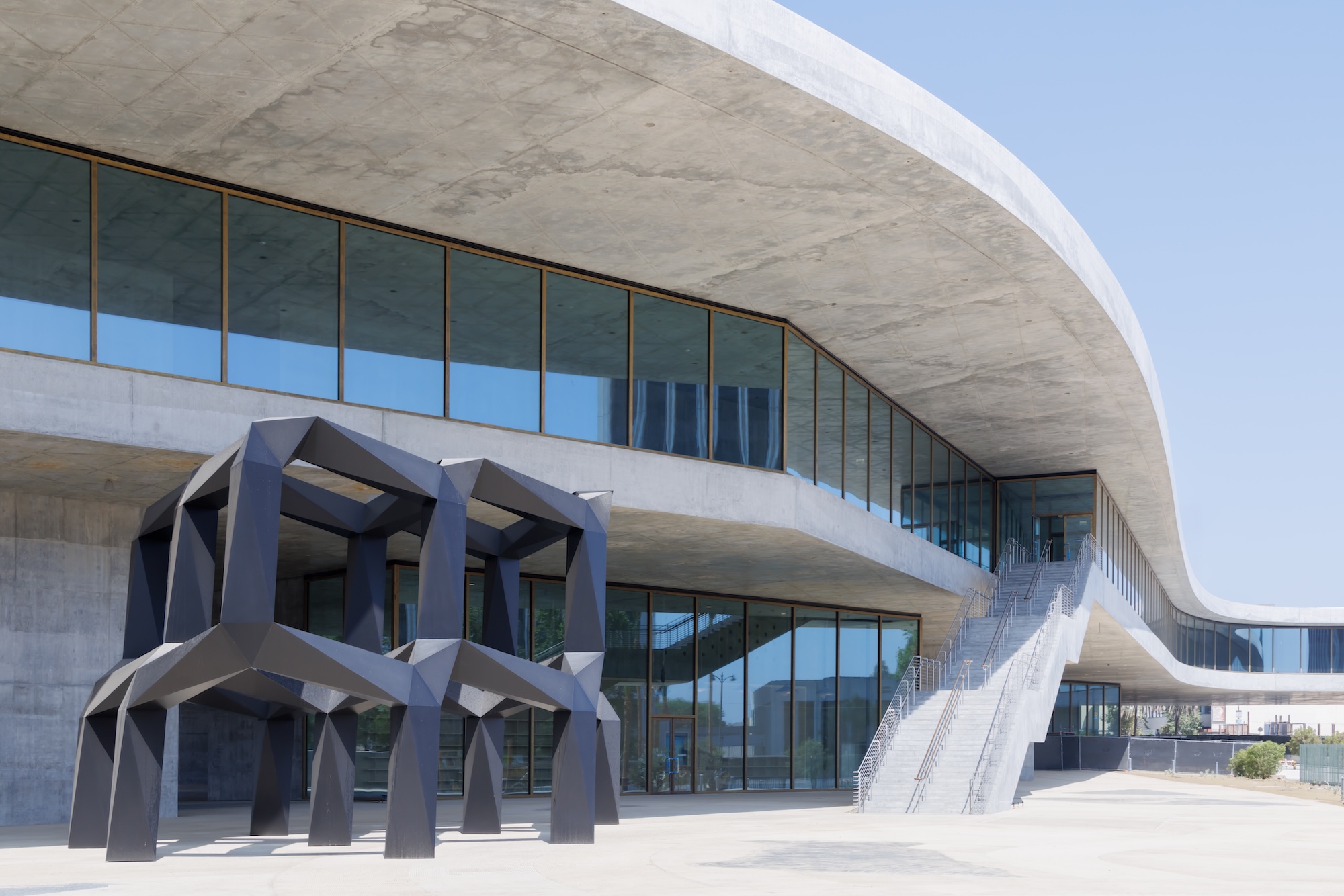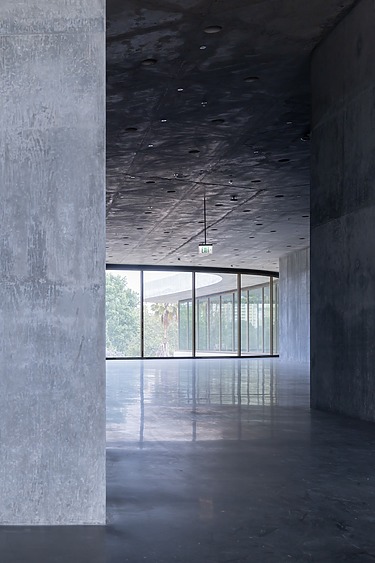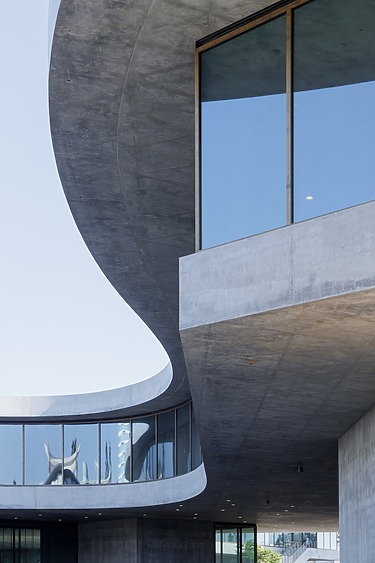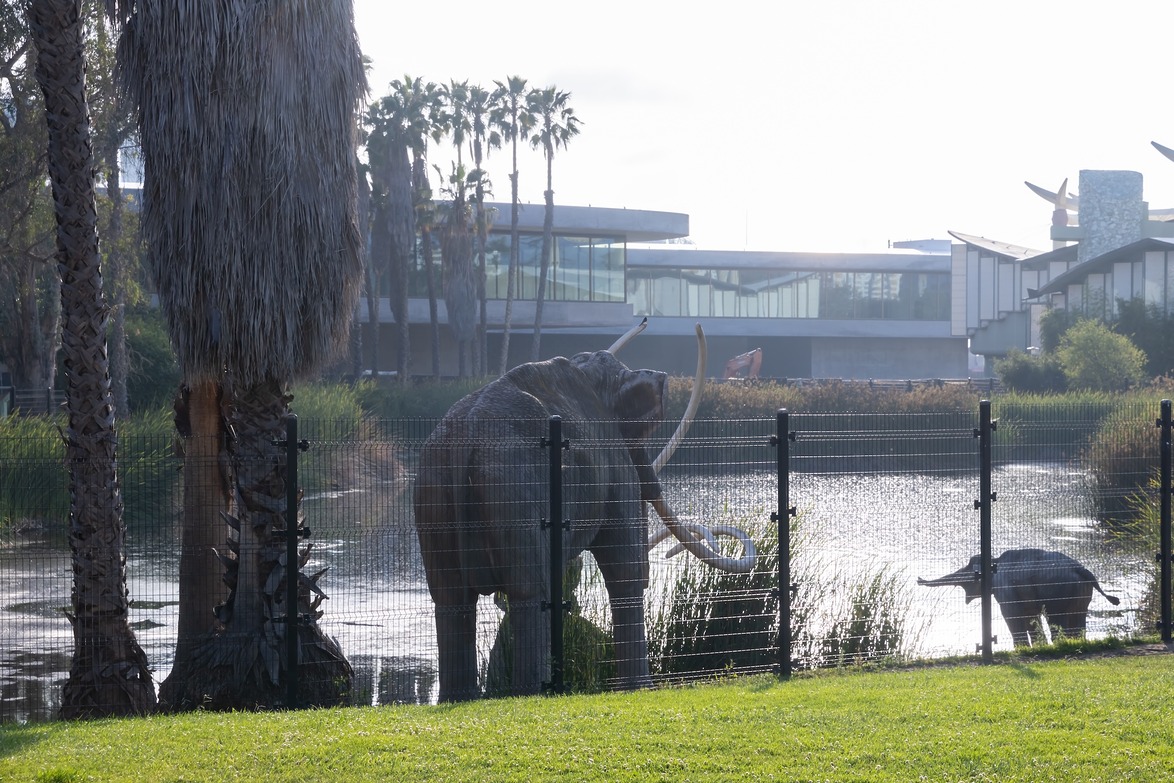LACMA Unveils Peter Zumthor–Designed Galleries Ahead of 2026 Opening
The long-awaited addition dramatically transforms the museum’s campus with a low-slung concrete structure that swoops across Wilshire Boulevard

Much like how I.M. Pei’s glass pyramid added angles of modernism to the Louvre, the Los Angeles County Museum of Art (LACMA) is gearing up for a major new addition that has already transformed its profile: the long-awaited public opening of the David Geffen Galleries designed by Pritzker Prize laureate Peter Zumthor in collaboration with Skidmore, Owings & Merrill. While the official debut is still somewhat far off—it officially opens next April—the institution recently offered the public a brief glimpse inside the $750 million complex, whose glass-and-concrete structure officially wrapped construction in late 2024. Over the next year, LACMA will install thousands of works from its permanent collection in the sprawling facility, which expands the museum’s exhibition space from 130,000 to 220,000 square feet.

In the meantime, a phased unveiling is underway with outdoor sculpture installations, dining and retail openings, and early access for members and donors beginning in the summer. Public programming kicked off over the weekend with sold-out live performances by jazz saxophonist and composer Kamasi Washington, who commissioned more than 100 musicians to play within the walls. The concerts were among the first events held inside the new galleries, offering Angelenos a raw, unfinished view of Zumthor’s architecture before art installation begins.


Named in recognition of David Geffen’s $150 million gift, the new building—to which the County of Los Angeles also invested $125 million—creates a low-slung bridge 30 feet above Wilshire Boulevard. Floating staircases and elevators on both sides of the street will allow access to exhibition-level galleries. Its north wing, named after the late philanthropist and collector Elaine Wynn, recognizes her $50 million gift that helped launch the museum’s capital campaign. (The south wing has yet to receive a name.) In total, LACMA has raised a staggering $840 million for the project, far surpassing its original goal.
Outside, LACMA is expanding its public park space to 3.5 acres, with major new commissions joining familiar favorites. Mariana Castillo Deball’s Feathered Changes will turn the museum’s entire north plaza into an expansive concrete artwork referencing Indigenous histories and local geology. Jeff Koons’s Split-Rocker, a 37-foot-tall floral sculpture combining a pony’s head with a dinosaur’s, will be installed on the south side by late 2025, gifted by Lynda and Stewart Resnick. More outdoor works are planned, including beloved sculptures that have become synonymous with LACMA. They include Tony Smith’s monumental Smoke followed by Alexander Calder’s iconic Three Quintains (Hello Girls), which was commissioned by the museum when it moved to Wilshire Boulevard in 1965. A collection of large-scale works by Auguste Rodin will also return in an 8,000-square-foot garden.

Amenities will open in phases beginning in the summer. A new Ray’s and Stark Bar and an expanded LACMA Store will debut on the north side of Wilshire, funded by donors including Kelvin Davis. Additional restaurants and a café, supported by gifts from Ann Colgin, Joe Wender, Ryan Seacrest, Ashley Merrill, and Marc Merrill, will follow in 2026. The south wing will also feature the new Steve Tisch Theater, a flexible space for film screenings, performances, lectures, and time-based media exhibitions, named for the trustee’s campaign gift.
Meanwhile, LACMA’s exhibition schedule will highlight the diversity of its collection once the building opens. Planned shows include a solo exhibition of multisensory installations by Tavares Strachan, an incisive journey through block printing across cultures, a deeply personal video and photography show by Yousself Nabil, and a behind-the-scenes look at LACMA’s extensive trove of Impressionist paintings.

As the city bounces back from recent challenges including unprecedented wildfires that decimated entire neighborhoods in January, museum leadership sees the project as a key cultural investment for Los Angeles. “The Geffen Galleries are both a stunningly beautiful work of architecture and a hub of the dynamic activity across LACMA’s entire campus,” Michael Govan, the museum’s CEO and Wallis Annenberg Director, said in a statement. “We’re excited that visitors from both near and far can begin to experience the impact of this amazing building this year as we ramp up toward the 2026 grand opening celebration. We also hope to be a part of the spiritual healing of Los Angeles.”